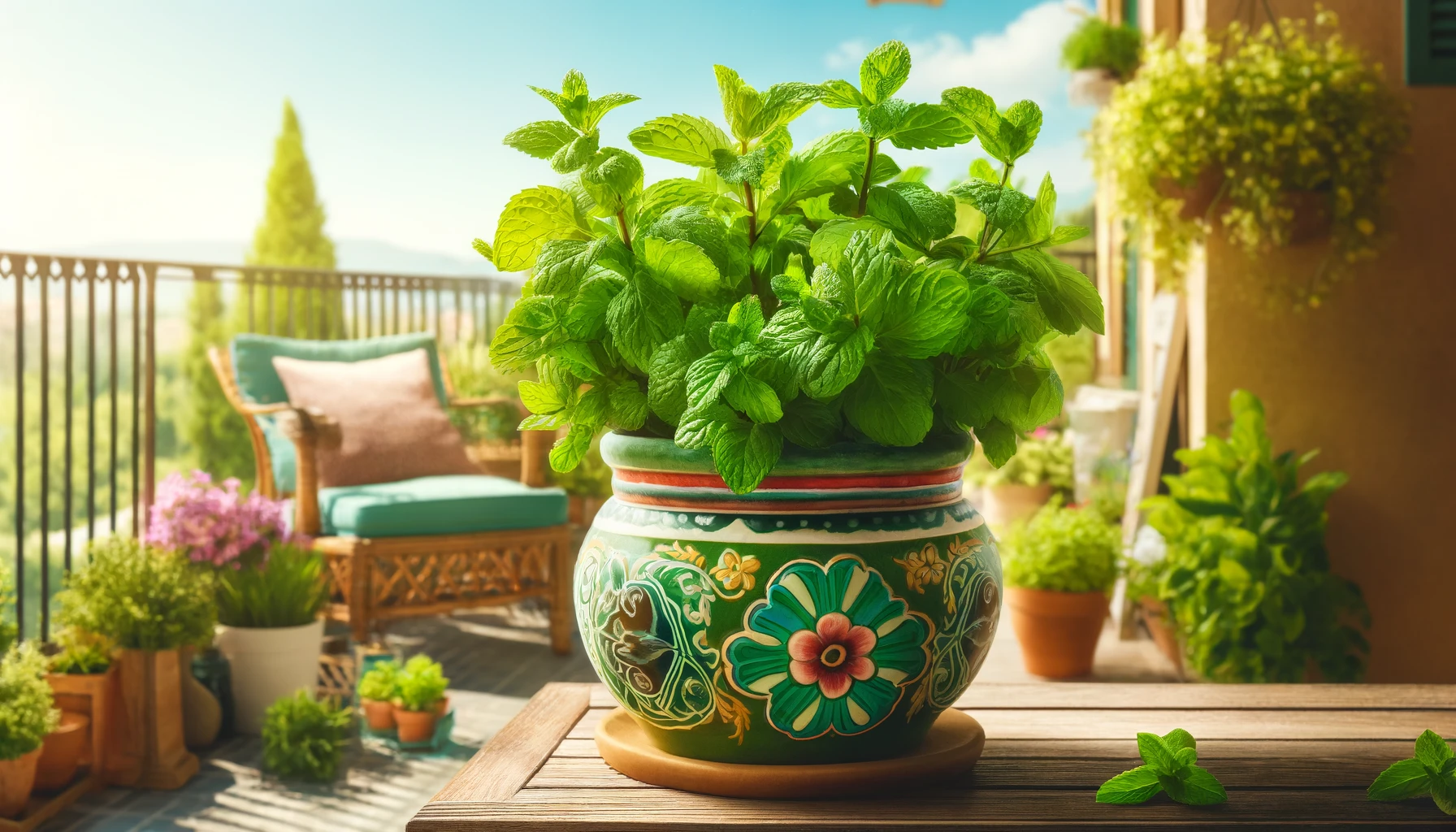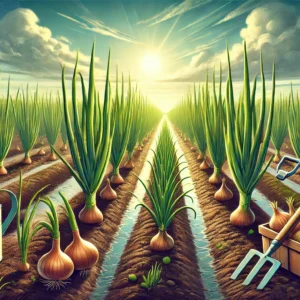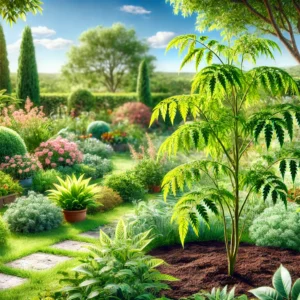Mint is a versatile and aromatic herb that thrives in a variety of environments, making it a popular choice for home gardeners. Known for its refreshing flavor, mint is commonly used in culinary dishes, beverages, and herbal remedies. Growing mint in a pot allows you to control its vigorous growth and keep it contained. This guide will walk you through the process of growing mint in a pot, from seed selection to harvesting and preserving your mint crop.
Perfect Pot Size for Mint
The ideal pot size for growing mint is at least 12 inches in diameter and 12 inches deep. This size provides ample space for the root system to develop while preventing the plant from becoming root-bound.
Perfect Weather Conditions for Mint
| Condition | Ideal Range |
|---|---|
| Temperature | 60-70°F (15-21°C) |
| Sunlight | Full sun to partial shade (4-6 hours) |
| Humidity | Moderate to high humidity |
| Soil pH | 6.0-7.0 |
| Soil Type | Moist, well-draining soil |
Choosing the Right Seeds
From the Shop
- Reputable Source: Purchase seeds from a trusted garden center or online retailer.
- Variety: Choose a variety that suits your needs, such as spearmint or peppermint.
- Seed Packet Information: Check for germination rates and expiration dates.
Collecting and Preserving Seeds
- Harvesting: Collect seeds from mature mint plants by allowing the flower spikes to dry.
- Cleaning: Gently remove the seeds from the dried flower heads.
- Storage: Store seeds in a cool, dry place in airtight containers to maintain viability.
Growing Mint from Seed
Step-by-Step Process
- Preparation: Start seeds indoors 8-10 weeks before the last frost date.
- Seed Tray: Fill a seed tray with a seed-starting mix.
- Sowing: Sprinkle seeds on the surface and lightly cover with a thin layer of soil.
- Watering: Mist the soil with water to keep it moist but not waterlogged.
- Germination: Place the tray in a warm, bright location. Seeds should germinate in 10-15 days.
- Thinning: Once seedlings have a few sets of true leaves, thin them to prevent overcrowding.
Nutrition Requirements for Mint
| Nutrient | Requirement | Reason |
|---|---|---|
| Nitrogen (N) | Moderate | Promotes leafy growth |
| Phosphorus (P) | Low to moderate | Supports root development |
| Potassium (K) | Moderate | Enhances overall plant health and vigor |
| Calcium (Ca) | Moderate | Strengthens cell walls |
| Magnesium (Mg) | Low to moderate | Essential for photosynthesis |
Soil Mix for Mint
| Ingredient | Amount | Soil Ratio |
|---|---|---|
| Garden Soil | 2 parts | 40% |
| Compost | 2 parts | 40% |
| Perlite or Sand | 1 part | 20% |
Making the Ideal Soil Mix
- Combine Ingredients: Mix garden soil, compost, and perlite/sand in the specified ratios.
- Blending: Ensure the mix is well blended to provide a balanced medium for the mint.
- Testing: Check the soil pH and adjust if necessary to maintain a pH between 6.0 and 7.0.
Pot Drainage System
- Drainage Holes: Ensure the pot has multiple drainage holes to prevent waterlogging.
- Layering: Place a layer of gravel or broken pottery at the bottom of the pot to enhance drainage.
- Geotextile Fabric: Consider adding a layer of geotextile fabric over the gravel to prevent soil from clogging the drainage holes.
Transferring Seedlings to the Pot
Step-by-Step Process
- Hardening Off: Gradually acclimate seedlings to outdoor conditions over a week.
- Preparing the Pot: Fill the pot with the prepared soil mix, leaving a few inches from the top.
- Transplanting: Carefully remove seedlings from the tray and plant them in the pot, spacing them evenly.
- Watering: Water thoroughly after planting to settle the soil around the roots.
Care for Mint at Different Growth Stages
Seedling Stage
- Watering: Keep the soil consistently moist.
- Fertilizing: Use a diluted, balanced fertilizer every 2 weeks.
- Pruning: Pinch off the top leaves to encourage bushier growth.
Vegetative Stage
- Watering: Water regularly, allowing the top inch of soil to dry out between watering.
- Fertilizing: Apply a balanced, slow-release fertilizer monthly.
- Pruning: Trim regularly to promote healthy growth and prevent flowering.
Maturity Stage
- Watering: Maintain consistent moisture but avoid waterlogging.
- Fertilizing: Reduce fertilization frequency as the plant matures.
- Pruning: Harvest leaves regularly and remove any flowering stems to encourage continued leaf production.
Special Instructions for Growing Mint in a Pot
- Location: Place the pot in a location that receives 4-6 hours of sunlight daily.
- Mobility: Pots can be moved to protect the mint from extreme weather conditions.
- Pest Control: Regularly check for pests like aphids and spider mites, and treat with organic insecticidal soap if necessary.
Harvesting and Preserving Mint
Harvesting
- Timing: Harvest mint just before flowering for the best flavor.
- Method: Cut stems 1-2 inches above the soil level, leaving some leaves for regrowth.
- Frequency: Harvest regularly to prevent the plant from becoming leggy.
Preserving
- Drying: Hang small bunches of mint upside down in a dark, well-ventilated area until completely dry.
- Freezing: Chop fresh mint and place in ice cube trays with water for convenient portions.
- Storing: Store dried mint in airtight containers away from light and moisture.
By following these detailed steps and guidelines, you can successfully grow mint in a pot, ensuring a continuous supply of this fragrant and useful herb for your culinary and medicinal needs.



